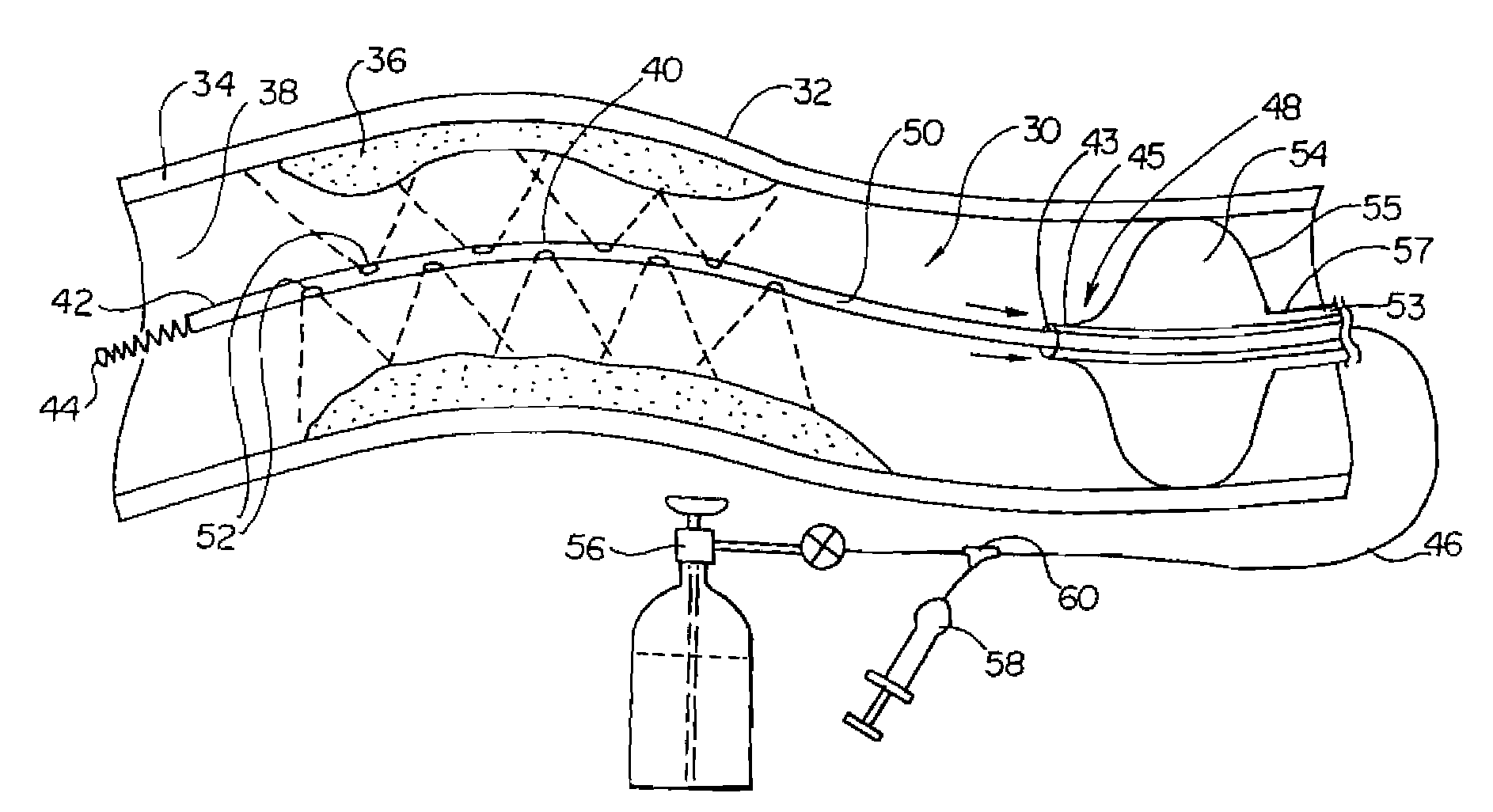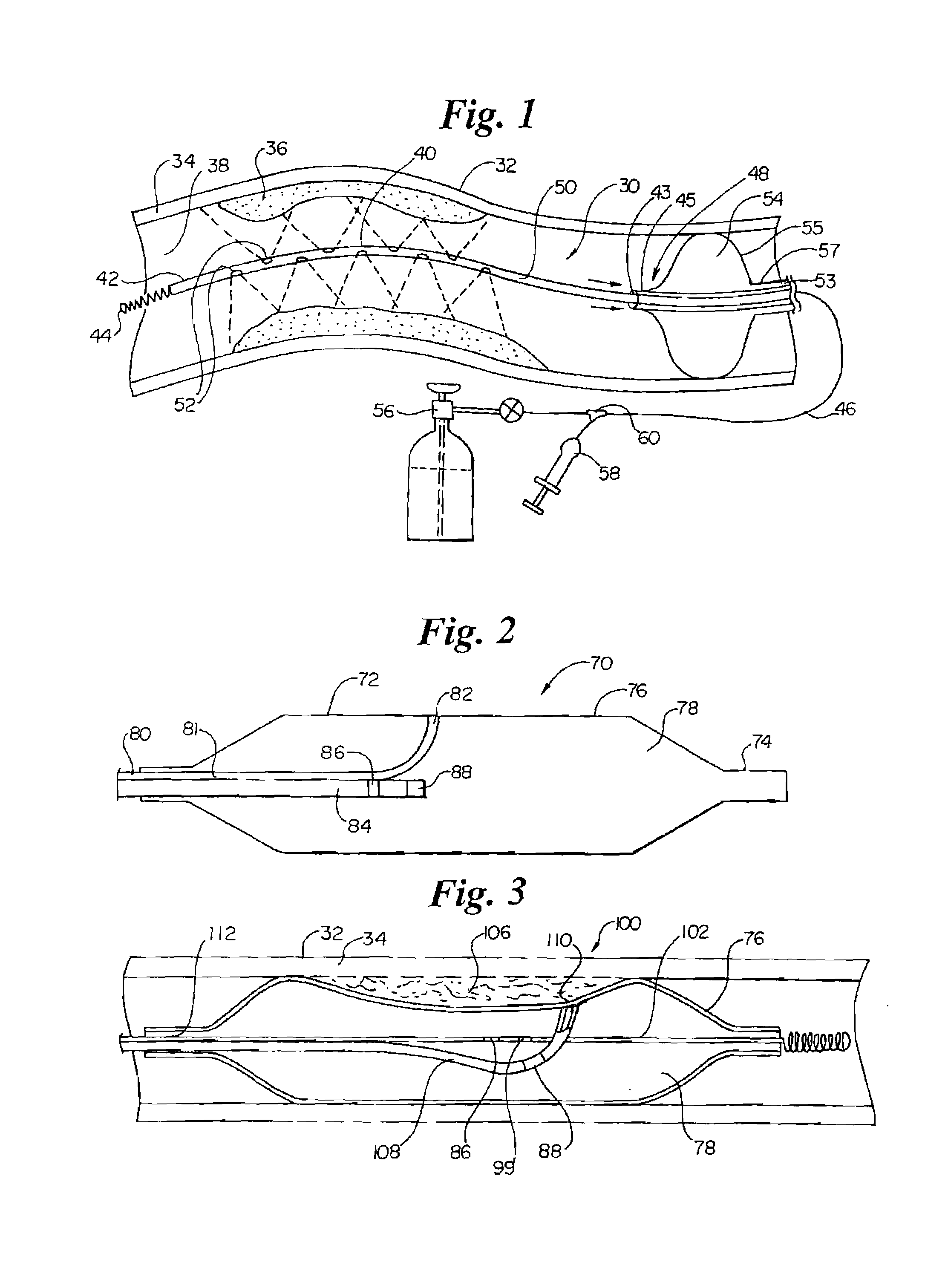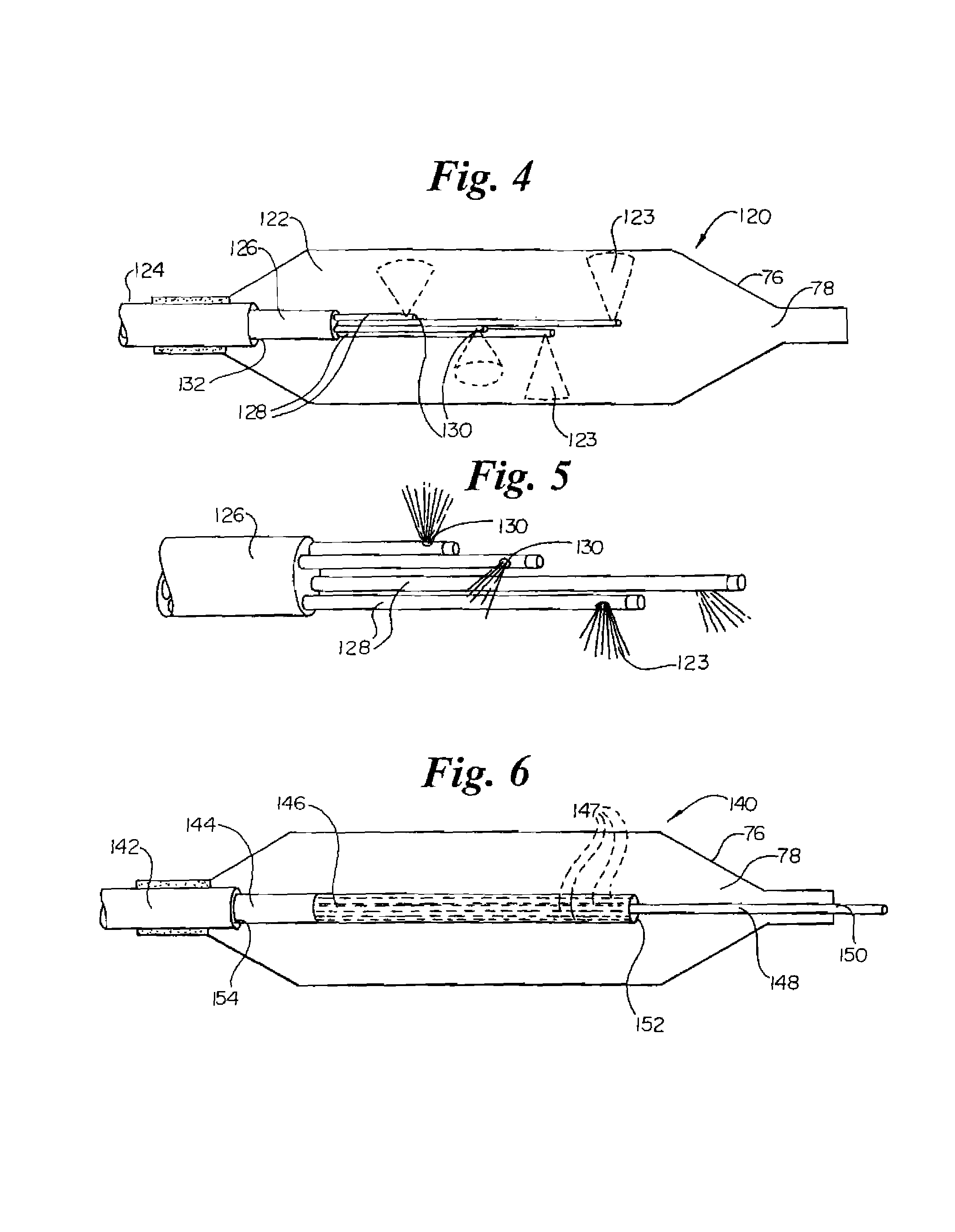Cryotreatment device and method
a cryotherapy and device technology, applied in the field of cryotherapy devices and methods, can solve the problems of irritating the wall of the artery in which they are implanted, affecting the goal of the angioplasty procedure, and in whole or in part, so as to reduce the adverse reaction of medical procedures affecting, and reduce the effect of any injury respons
- Summary
- Abstract
- Description
- Claims
- Application Information
AI Technical Summary
Benefits of technology
Problems solved by technology
Method used
Image
Examples
Embodiment Construction
[0034]FIG. 1 illustrates a vessel cooling device 30 disposed within a body blood vessel 32 having a vessel wall 34, a lumen 38 therethrough, and a stenosis, lesion, or plaque 36 partially occluding the vessel lumen and extending over a length of vessel. In the embodiment illustrated, cooling device 30 includes a tubular shaft 48 having a proximal region 46, distal region 40, a distal end 42, and a distal tip 44. Shaft 48 includes a coolant tube 50 having a lumen therethrough and a plurality of coolant delivery orifices 52 disposed longitudinally and radially about the shaft distal region. The coolant is illustrated as spraying directly on the lesion. Cooling device 30 also includes an occlusion device 55 for occluding the vessel lumen. In the embodiment illustrated, an annular exhaust lumen 43 is defined between coolant tube 50 and a coaxially disposed exhaust tube 45. Exhaust tube 45 can be used to remove coolant from the vessel, in either liquid or gaseous form. In this embodiment...
PUM
 Login to View More
Login to View More Abstract
Description
Claims
Application Information
 Login to View More
Login to View More - R&D
- Intellectual Property
- Life Sciences
- Materials
- Tech Scout
- Unparalleled Data Quality
- Higher Quality Content
- 60% Fewer Hallucinations
Browse by: Latest US Patents, China's latest patents, Technical Efficacy Thesaurus, Application Domain, Technology Topic, Popular Technical Reports.
© 2025 PatSnap. All rights reserved.Legal|Privacy policy|Modern Slavery Act Transparency Statement|Sitemap|About US| Contact US: help@patsnap.com



